SPEECH SOUNDS SYSTEM of ENGLISH CONTENT Definition of

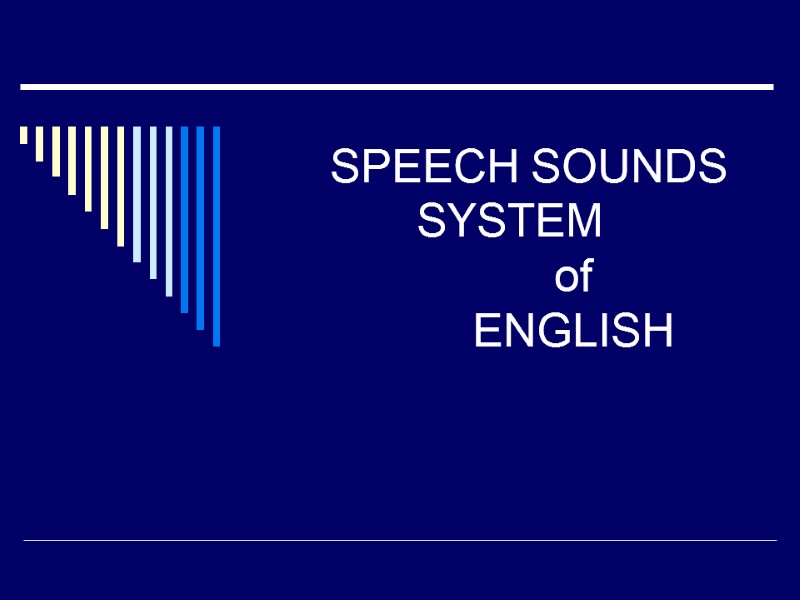
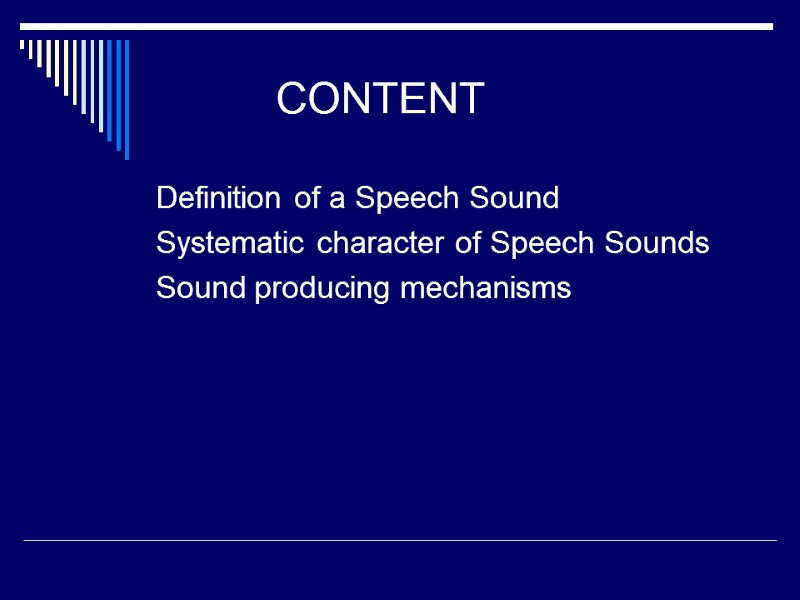
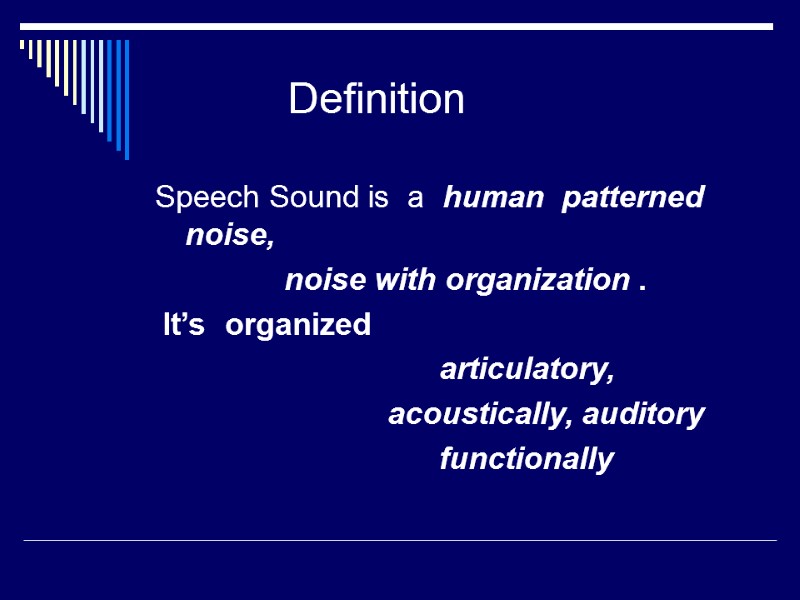
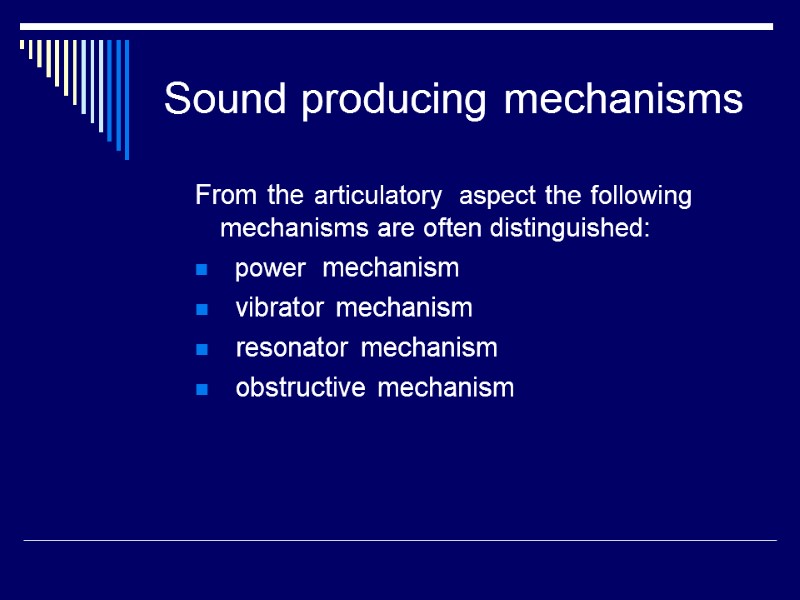
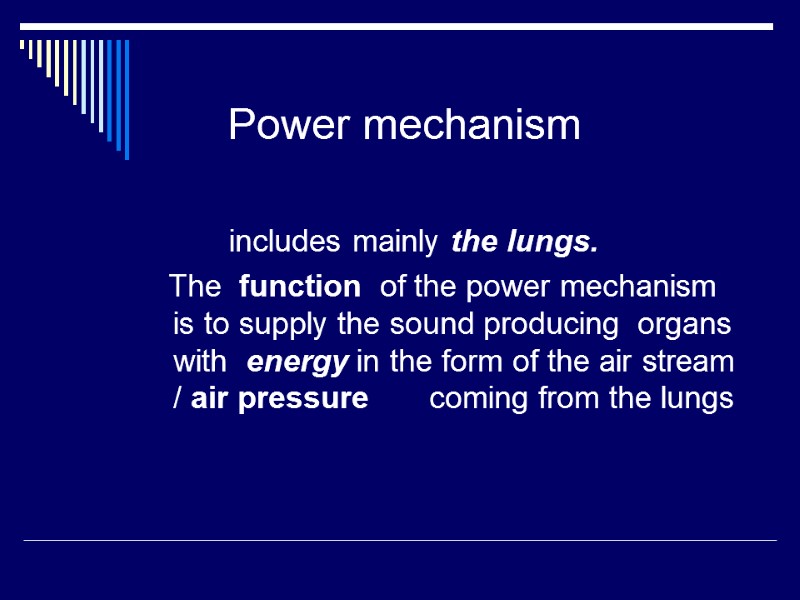
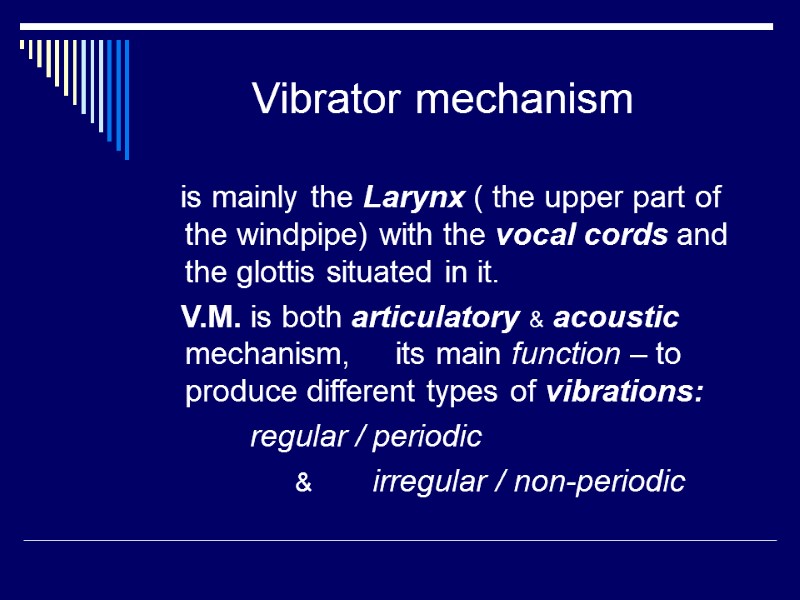
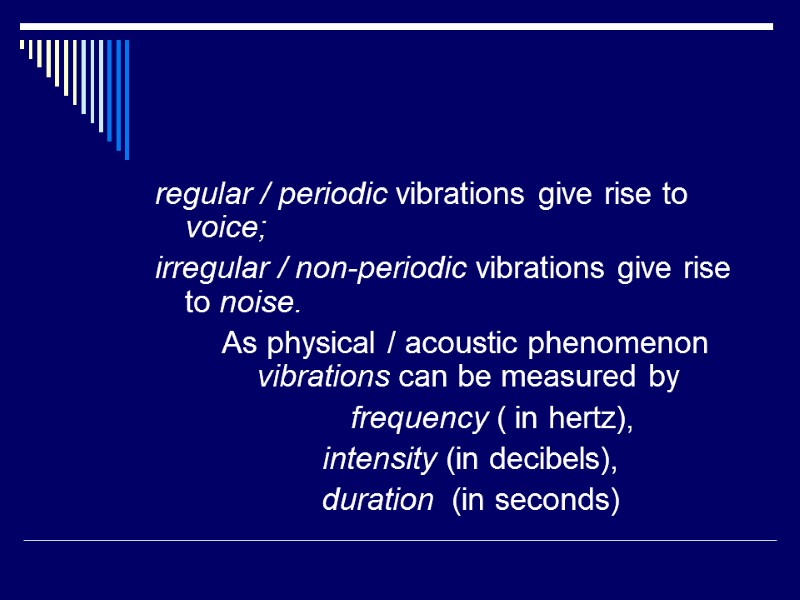
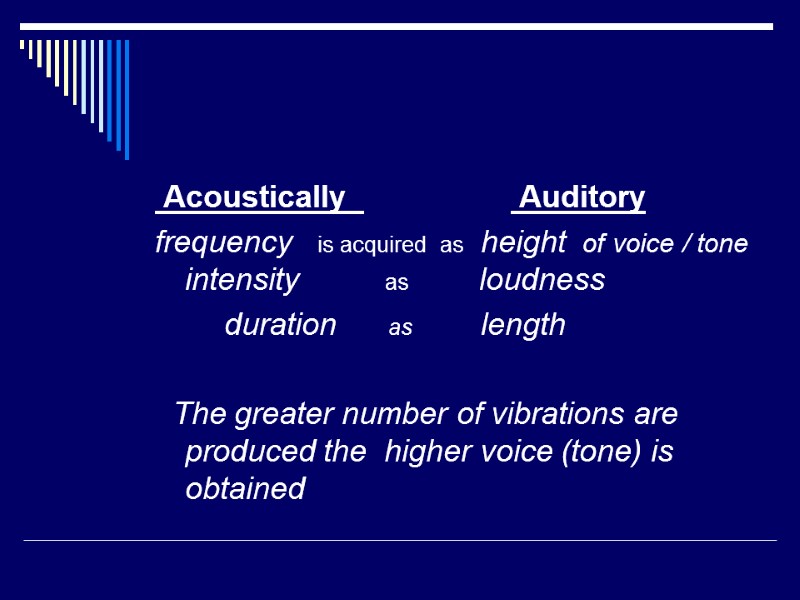
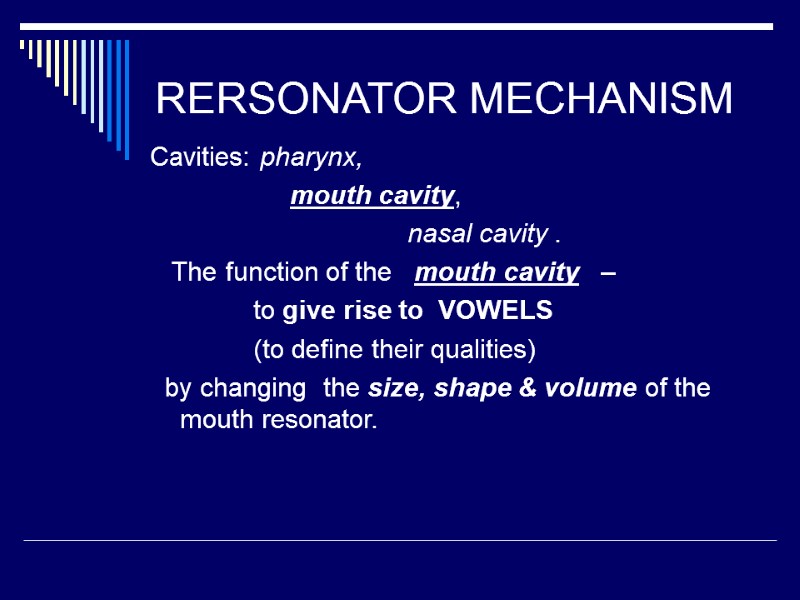
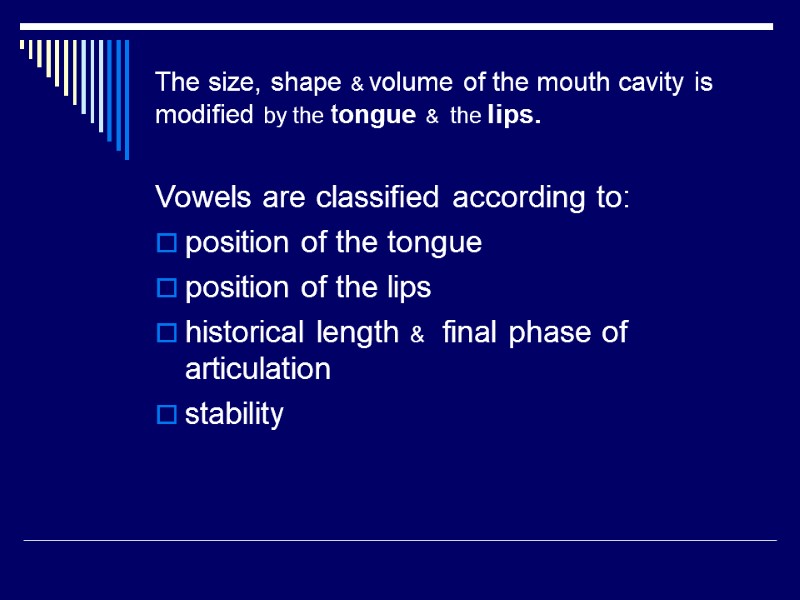
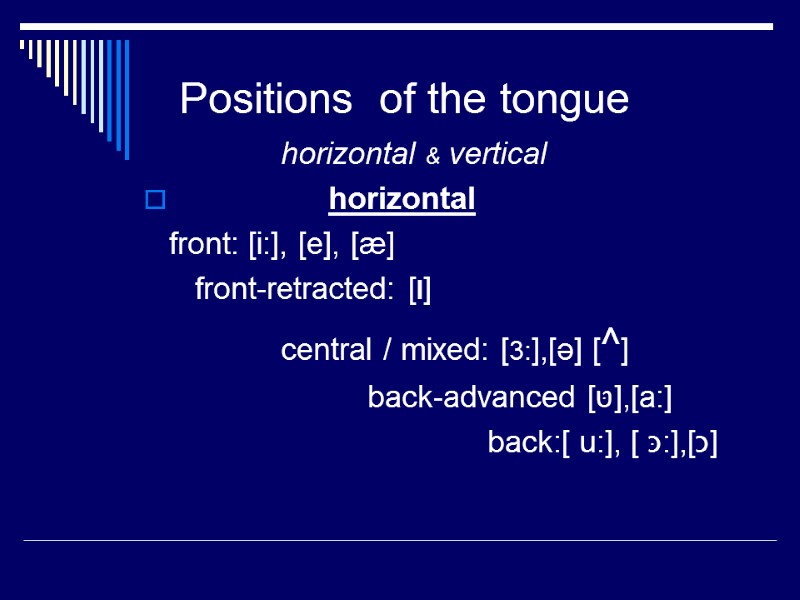
![vertical high [ i:], vertical high [ i:],](https://present5.com/presentacii-2/20171208\6446-system_of___speech_sounds.ppt\6446-system_of___speech_sounds_12.jpg)
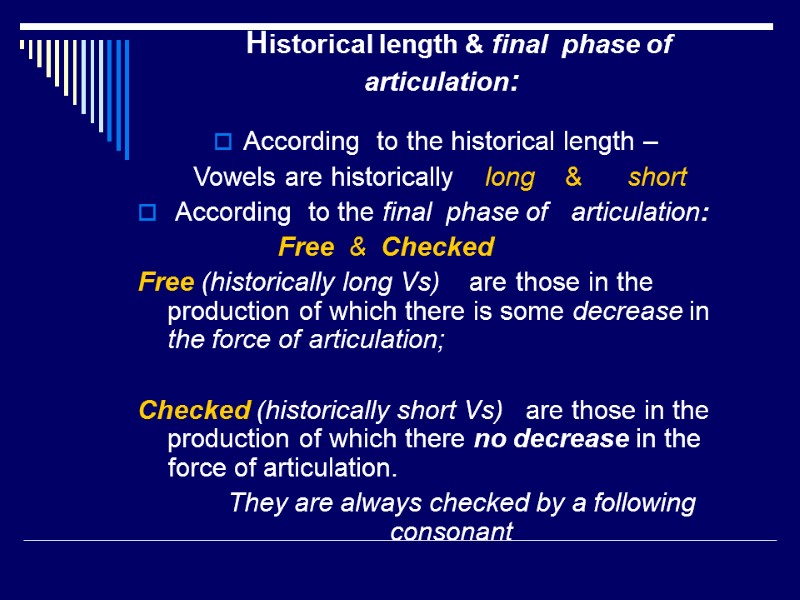
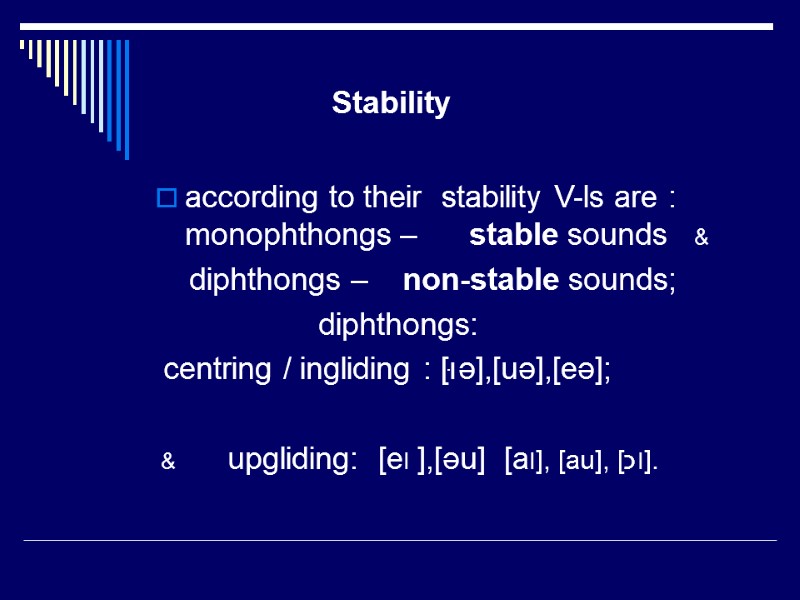
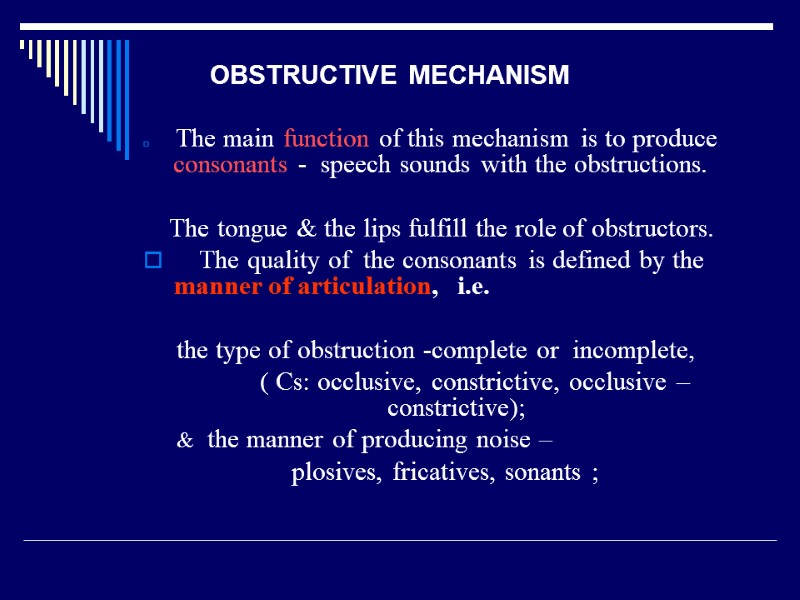
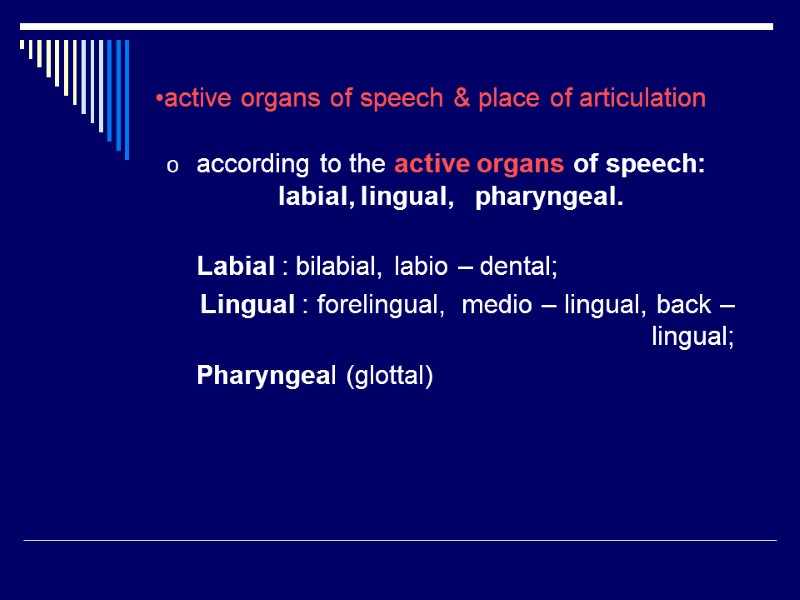
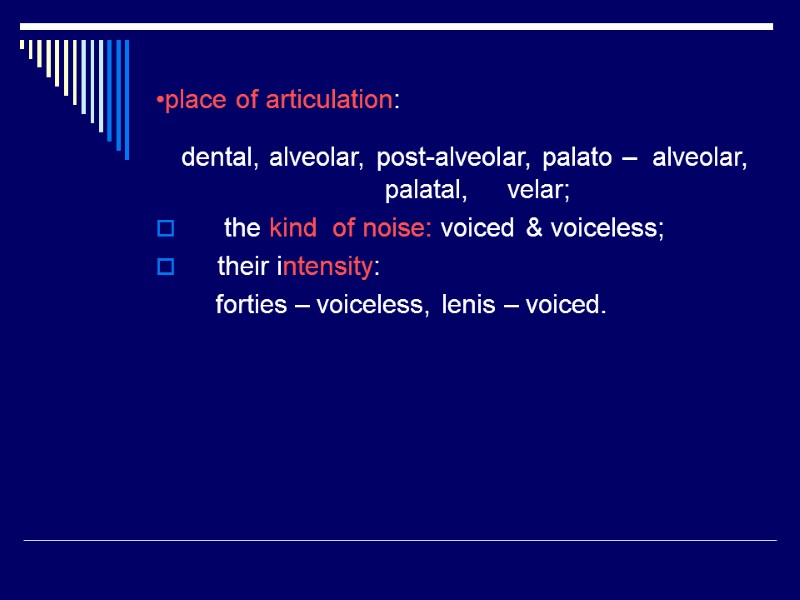
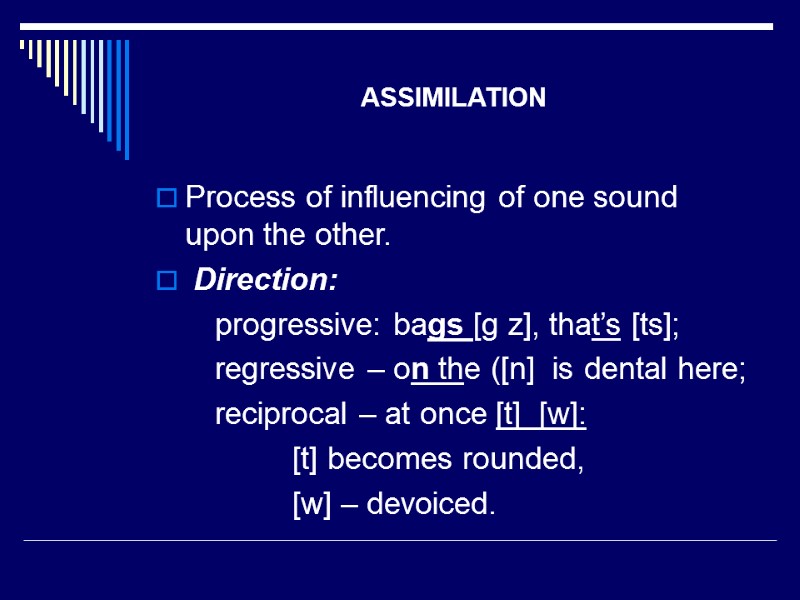
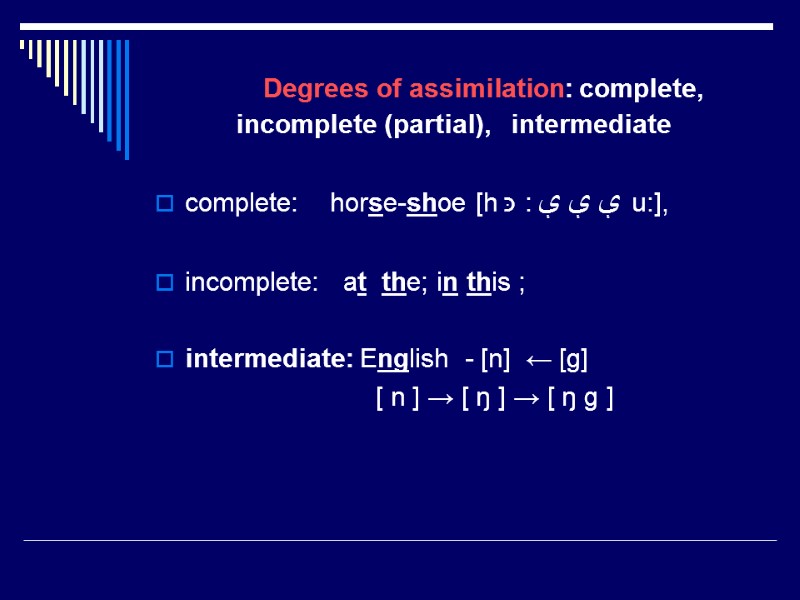
6446-system_of___speech_sounds.ppt
- Количество слайдов: 19
 SPEECH SOUNDS SYSTEM of ENGLISH
SPEECH SOUNDS SYSTEM of ENGLISH
 CONTENT Definition of a Speech Sound Systematic character of Speech Sounds Sound producing mechanisms
CONTENT Definition of a Speech Sound Systematic character of Speech Sounds Sound producing mechanisms
 Definition Speech Sound is a human patterned noise, noise with organization . It’s organized articulatory, acoustically, auditory functionally
Definition Speech Sound is a human patterned noise, noise with organization . It’s organized articulatory, acoustically, auditory functionally
 Sound producing mechanisms From the articulatory aspect the following mechanisms are often distinguished: power mechanism vibrator mechanism resonator mechanism obstructive mechanism
Sound producing mechanisms From the articulatory aspect the following mechanisms are often distinguished: power mechanism vibrator mechanism resonator mechanism obstructive mechanism
 Power mechanism includes mainly the lungs. The function of the power mechanism is to supply the sound producing organs with energy in the form of the air stream / air pressure coming from the lungs
Power mechanism includes mainly the lungs. The function of the power mechanism is to supply the sound producing organs with energy in the form of the air stream / air pressure coming from the lungs
 Vibrator mechanism is mainly the Larynx ( the upper part of the windpipe) with the vocal cords and the glottis situated in it. V.M. is both articulatory & acoustic mechanism, its main function – to produce different types of vibrations: regular / periodic & irregular / non-periodic
Vibrator mechanism is mainly the Larynx ( the upper part of the windpipe) with the vocal cords and the glottis situated in it. V.M. is both articulatory & acoustic mechanism, its main function – to produce different types of vibrations: regular / periodic & irregular / non-periodic
 regular / periodic vibrations give rise to voice; irregular / non-periodic vibrations give rise to noise. As physical / acoustic phenomenon vibrations can be measured by frequency ( in hertz), intensity (in decibels), duration (in seconds)
regular / periodic vibrations give rise to voice; irregular / non-periodic vibrations give rise to noise. As physical / acoustic phenomenon vibrations can be measured by frequency ( in hertz), intensity (in decibels), duration (in seconds)
 Acoustically Auditory frequency is acquired as height of voice / tone intensity as loudness duration as length The greater number of vibrations are produced the higher voice (tone) is obtained
Acoustically Auditory frequency is acquired as height of voice / tone intensity as loudness duration as length The greater number of vibrations are produced the higher voice (tone) is obtained
 RERSONATOR MECHANISM Cavities: pharynx, mouth cavity, nasal cavity . The function of the mouth cavity – to give rise to VOWELS (to define their qualities) by changing the size, shape & volume of the mouth resonator.
RERSONATOR MECHANISM Cavities: pharynx, mouth cavity, nasal cavity . The function of the mouth cavity – to give rise to VOWELS (to define their qualities) by changing the size, shape & volume of the mouth resonator.
 The size, shape & volume of the mouth cavity is modified by the tongue & the lips. Vowels are classified according to: position of the tongue position of the lips historical length & final phase of articulation stability
The size, shape & volume of the mouth cavity is modified by the tongue & the lips. Vowels are classified according to: position of the tongue position of the lips historical length & final phase of articulation stability
 Positions of the tongue horizontal & vertical horizontal front: [i:], [e], [æ] front-retracted: [I] central / mixed: [3:],[ә] [^] back-advanced [טּ],[a:] back:[ u:], [ כּ:],[כ]
Positions of the tongue horizontal & vertical horizontal front: [i:], [e], [æ] front-retracted: [I] central / mixed: [3:],[ә] [^] back-advanced [טּ],[a:] back:[ u:], [ כּ:],[כ]
![>vertical high [ i:], >vertical high [ i:],](https://present5.com/presentacii-2/20171208\6446-system_of___speech_sounds.ppt\6446-system_of___speech_sounds_12.jpg) vertical high [ i:], [u:] [ וּ ], [ טּ] mid [e] [3:], [ ә], [^], broad & narrow variations of each group low [æ], [a:], [ כ:], [ כּ]
vertical high [ i:], [u:] [ וּ ], [ טּ] mid [e] [3:], [ ә], [^], broad & narrow variations of each group low [æ], [a:], [ כ:], [ כּ]
 Historical length & final phase of articulation: According to the historical length – Vowels are historically long & short According to the final phase of articulation: Free & Checked Free (historically long Vs) are those in the production of which there is some decrease in the force of articulation; Checked (historically short Vs) are those in the production of which there no decrease in the force of articulation. They are always checked by a following consonant
Historical length & final phase of articulation: According to the historical length – Vowels are historically long & short According to the final phase of articulation: Free & Checked Free (historically long Vs) are those in the production of which there is some decrease in the force of articulation; Checked (historically short Vs) are those in the production of which there no decrease in the force of articulation. They are always checked by a following consonant
 Stability according to their stability V-ls are : monophthongs – stable sounds & diphthongs – non-stable sounds; diphthongs: centring / ingliding : [וּә],[uә],[eә]; & upgliding: [eI ],[әu] [aI], [au], [כI].
Stability according to their stability V-ls are : monophthongs – stable sounds & diphthongs – non-stable sounds; diphthongs: centring / ingliding : [וּә],[uә],[eә]; & upgliding: [eI ],[әu] [aI], [au], [כI].
 OBSTRUCTIVE MECHANISM The main function of this mechanism is to produce consonants - speech sounds with the obstructions. The tongue & the lips fulfill the role of obstructors. The quality of the consonants is defined by the manner of articulation, i.e. the type of obstruction -complete or incomplete, ( Cs: occlusive, constrictive, occlusive – constrictive); & the manner of producing noise – plosives, fricatives, sonants ;
OBSTRUCTIVE MECHANISM The main function of this mechanism is to produce consonants - speech sounds with the obstructions. The tongue & the lips fulfill the role of obstructors. The quality of the consonants is defined by the manner of articulation, i.e. the type of obstruction -complete or incomplete, ( Cs: occlusive, constrictive, occlusive – constrictive); & the manner of producing noise – plosives, fricatives, sonants ;
 according to the active organs of speech: labial, lingual, pharyngeal. Labial : bilabial, labio – dental; Lingual : forelingual, medio – lingual, back – lingual; Pharyngeal (glottal) active organs of speech & place of articulation
according to the active organs of speech: labial, lingual, pharyngeal. Labial : bilabial, labio – dental; Lingual : forelingual, medio – lingual, back – lingual; Pharyngeal (glottal) active organs of speech & place of articulation
 place of articulation: dental, alveolar, post-alveolar, palato – alveolar, palatal, velar; the kind of noise: voiced & voiceless; their intensity: forties – voiceless, lenis – voiced.
place of articulation: dental, alveolar, post-alveolar, palato – alveolar, palatal, velar; the kind of noise: voiced & voiceless; their intensity: forties – voiceless, lenis – voiced.
 ASSIMILATION Process of influencing of one sound upon the other. Direction: progressive: bags [g z], that’s [ts]; regressive – on the ([n] is dental here; reciprocal – at once [t] [w]: [t] becomes rounded, [w] – devoiced.
ASSIMILATION Process of influencing of one sound upon the other. Direction: progressive: bags [g z], that’s [ts]; regressive – on the ([n] is dental here; reciprocal – at once [t] [w]: [t] becomes rounded, [w] – devoiced.
 Degrees of assimilation: complete, incomplete (partial), intermediate complete: horse-shoe [h כּ : ﯤ ﯤ ﯤ u:], incomplete: at the; in this ; intermediate: English - [n] ← [g] [ n ] → [ ŋ ] → [ ŋ g ]
Degrees of assimilation: complete, incomplete (partial), intermediate complete: horse-shoe [h כּ : ﯤ ﯤ ﯤ u:], incomplete: at the; in this ; intermediate: English - [n] ← [g] [ n ] → [ ŋ ] → [ ŋ g ]

